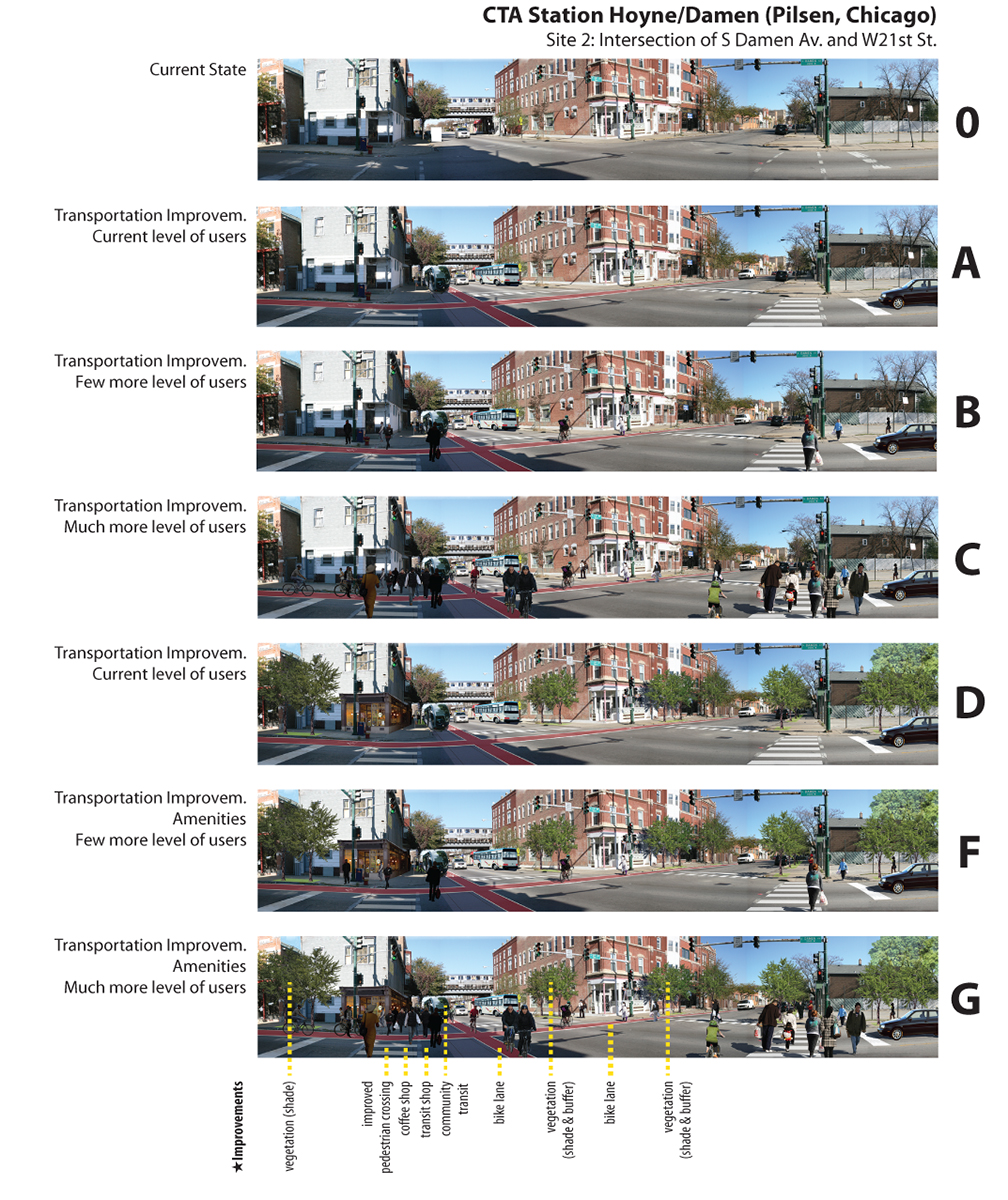U.S. Department of Transportation
Federal Highway Administration
1200 New Jersey Avenue, SE
Washington, DC 20590
202-366-4000
Federal Highway Administration Research and Technology
Coordinating, Developing, and Delivering Highway Transportation Innovations
| SUMMARY REPORT |
| This summary report is an archived publication and may contain dated technical, contact, and link information |
|
| Publication Number: FHWA-HRT-15-015 Date: June 2015 |
Publication Number: FHWA-HRT-15-015 Date: June 2015 |
The researchers designed potential transportation (shuttle and biking facilities) and urban design (streetscape changes) improvements for each station approach (two for each transit station), and they described and illustrated the improvement changes in materials that were distributed in the neighborhood surveys. For each approach, seven illustrations were prepared that showed:
The transportation and streetscape design improvements are described in the following sections.
The primary hypothesis in the study was that an automated high-frequency community shuttle service would increase transit use and reduce driving. The shuttle vehicle would circulate frequently through the neighborhood, delivering passengers to and from the regional rail station, on a fixed route and a fixed schedule. Illustrations in the survey materials showed the shuttle vehicle near spacious, covered transit stops with seating.
Bicycle facilities were the second transportation improvement and included well-marked, dedicated bicycle lanes; bicycle traffic signals; and bicycle stands. Illustrations in the survey showed the brightly colored bicycle lanes located, where possible, between the street curb and parked cars.
The design elements illustrated in the survey materials target safety, density of users, and attractiveness of surroundings to users near the station. Some of the elements that have been shown to increase use of alternatives to driving include the presence of pedestrians, shops and businesses, benches and other places to sit, a friend or neighbor using the same route, and traffic control devices that aid pedestrians.(1) For bicyclists, bicycle lanes, bicycle signals, and bike racks near public transit are important.(2,3,4) Transit riders value sheltered, well-lit waiting areas and safe access to vehicles.(5,6) Although diversity of land use and density of the built environment have also been shown to improve walkability, this research was focused on assessing environmental improvements that did not require changes in land use; therefore, no alterations to the built environment were shown in the illustrations.
The improvements illustrated in the community survey included the shuttle and bicycle facilities described previously and an assortment of street-scape features: widened and brightened sidewalks, pedestrian crosswalks, a generous tree canopy and continuous plantings, signs, public art, magazine and newspaper dispensing boxes, trashcans, light poles, and sign posts. The survey illustrations also represented different levels of use with the addition of pedestrians, cyclists, and transit users in the vicinity of the intersections. For an example, see the illustrations prepared for Site 2 at the Hoyne/Damen station in Pilsen in figure 3. A photograph of the unchanged area is shown first. Three images follow with transportation improvements (shuttle vehicle and bicycle facilities) at increasing levels of use. The final three images show both the transportation and the urban design improvements at increasing levels of use.

© University of Michigan
Figure 3. Example of the illustrated improvements. [Note: The seven graphics depict site 2, the Damen Avenue approach to Pilsen’s Hoyne/Damen CTA station.]